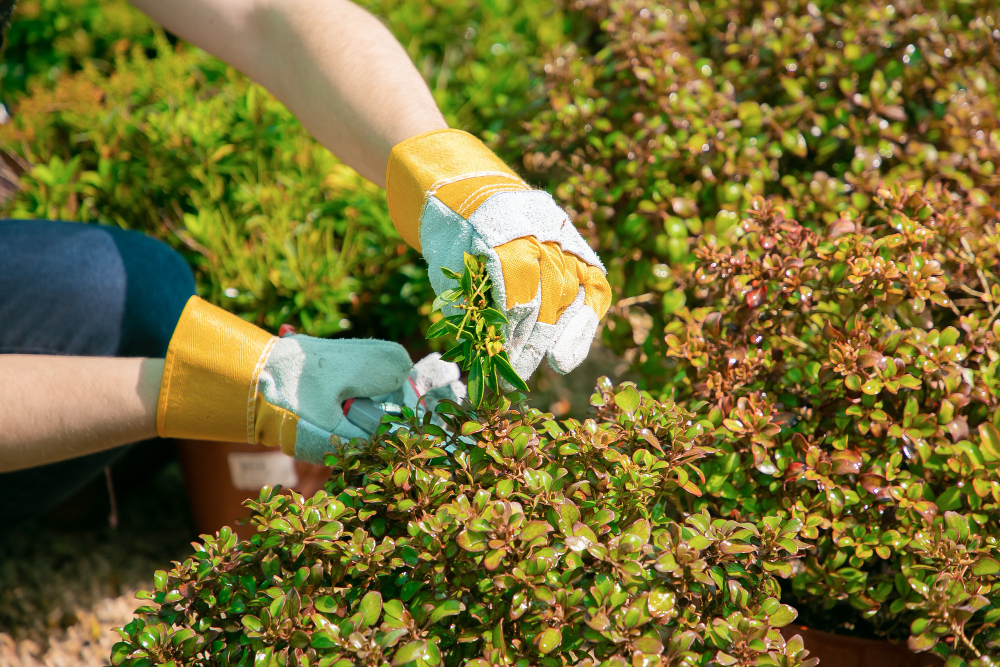Many beginner DIY gardeners have to deal with ugly or non-functional landscaping. Perhaps it’s because the landscape was already in place when they bought the home or plants died from harsh winters.
Creating a beautiful yard doesn’t have to be hard. This beginner’s guide to landscaping will teach you how to tackle your first project and create a yard you love.
Lines
Lines are one of the most fundamental design elements in a landscape. They can be implied by the arrangement of plants and other living elements or they can come from physical, manmade features such as walkways. Both types can serve to direct the eye toward a focal point or create accents in a garden.
Straight lines, such as those created by paths and fences, tend to move the eyes quickly and forcefully in a direction. They communicate a sense of order and formality. Curved lines, on the other hand, move the eye at a more relaxed pace and can add a sense of mystery. They also communicate a more informal and natural setting.
Sight lines, which are lines that lead the eye across the landscape, are another important part of a landscape composition. They can be implied by the arrangement of flowers or plants or they can be more clearly defined by a path or structure. Designers often use these directional lines to heighten a sense of discovery when walking through the landscape or to block a less desirable view.
When designing a landscape, it is also important to consider how the colors of a yard will change throughout the four seasons. While it may be tempting to focus on the bright and vibrant colors that will appear in the spring and summer, it is important to include some evergreen trees or shrubs so that the landscape continues to offer color throughout the winter.
Mass
Mass is the area occupied by a landscape component. Your house, structures like gazebos or water features, and individual plants all have mass. Mass is important in a design because it helps balance the voids, or empty spaces, which are also a key aspect of landscape design.
As you begin planning your yard, use a base map to help visualize how different elements might work together. Don’t worry about cost at this point; the goal is simply to brainstorm ideas. Use a pen and paper or an online program to draw circular or blobby areas (bubble diagrams) on your base map to represent potential uses for different parts of your yard. This will help you hone in on the best options for your yard.
Form
In a landscape, form describes how two-dimensional elements like plants and structures grow and stand. A flat silhouette of a tree illustrates its shape, while the growth pattern of a shrub or vine describes its form. Repetition of shape and form helps create unity in a garden, but contrast prevents monotony.
Color is another visual element that catches the eye. Warm colors like red, yellow, and orange excite the mind and make objects feel closer; cool colors like greens, blues, and purples offer a relaxing sensation. Texture — how rough, smooth, coarse, or fine the surfaces of plant material are — also plays an important role in a landscape design.
Voids
A landscaping project is a great way to add value and curb appeal to your home. It can be overwhelming to get started, but it’s important to have a clear idea of what you want to accomplish before you begin. Landscaping combines four primary building blocks: lines, form, mass, and voids. These elements work together to create a balanced and functional yard.
It’s also important to consider the style of your home when planning your landscape. For example, a mid-century modern home would benefit from rectilinear shapes, while a Mediterranean-style home would look better with soft shapes like circles or triangles.
When designing your landscape, it’s important to remember that it takes time for plants to grow and mature. To speed up the process, use mulch and fast-growing groundcovers to cover bare areas while you’re getting your garden established. It’s also a good idea to keep a landscaping journal and make notes as you go along. This will help you remember your inspiration and successes and help you avoid repeating mistakes. Also, always call before you dig to find out the location of buried utility lines.
Talk to a Landscaping Company
We are experts in installing new landscaping, renovating landscapes, outdoor lighting, and irrigation installation systems. Whatever your project is to make your outdoor look amazing, we can help you. Give us a quick call so we can talk more about your next outdoor project.




